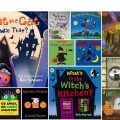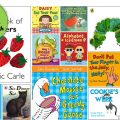Author: Rod Campbell
Illustrator: Rod Campbell
Publisher: Macmillan Children’s Books
Year: 1982
Language: English
Type of Resource: Illustrated lift-the-flap picture book
Themes: Animals, Descriptions
Age Group: 3 to 7 years old
School Levels: Preschool to Elementary (Grades K–5); also suitable for remediation or reinforcement in Grades 4–5
Main Learning Objective: Learn the names of common animals and describe them using simple phrases, including expressions of rejection.
Target Language Goal in English: I can describe animals and explain why I don’t want them.
Summary of the Book
In Dear Zoo, a child writes to the zoo requesting a pet. On each double-page spread, the zoo sends an animal hidden in a crate or box that children reveal by lifting a flap. However, each animal comes with a problem: the elephant is too big, the lion is too fierce, the monkey is too naughty… so the child sends them all back one by one. Eventually, the zoo sends the perfect pet: a puppy! The story uses a repetitive and cumulative narrative structure, which supports comprehension and retention in young language learners.
Culture and Vocabulary
This book introduces a universal theme: choosing a pet — an engaging and highly motivating topic for children. Its repetitive pattern and interactive flaps encourage active participation and implicit understanding. The concept of writing letters, less familiar to today’s children, can also spark discussions on communication methods.
- Animals: elephant, giraffe, lion, camel, snake, monkey, frog, puppy
- Descriptive Adjectives: heavy, big, tall, fierce, grumpy, scary, naughty, jumpy
- Action Verbs: wrote, sent, was, sent back, thought
- Common Phrases: They sent me a… He was too… I sent him back. So they sent me a…
- Descriptive Structures: but he was too… (to express rejection)
- Emotion-related Vocabulary: fierce, grumpy, naughty, scary
- Crate Labels in the Book: very heavy, fragile, danger, with care, from all your friends at the zoo
Grammar and Structures
- Negative form using “but he was too…”: But he was too big! (Expressing a reason for rejection)
- Subject pronoun + past tense of “to be”: He was too tall! (Describing physical traits)
- Simple past (preterite): I wrote to the zoo (Narrating past actions)
- Repetitive past actions: I sent him back.
- Use of “too + adjective”: Highlights excess and builds awareness of descriptive phrases
- Causal chain with “So they sent me a…”: Supports sequencing and logical progression in storytelling
- Indefinite and definite articles: a pet, the zoo, an elephant (Practicing article usage)
- Exclamations: He was too fierce! (Helps with intonation and emotion in speech)
Phonology
- [f] sound in “giraffe”
- Rhymes and rhythm enhance memorization: heavy / elephant, tall / giraffe, scary / snake
- [s] and [z] sounds in: send, was, was too
- Short and punchy sounds: big, back, pet, sent, zoo
- Long vs. short vowel contrasts: too vs pet, zoo vs back
- Internal rhymes: grumpy / jumpy / puppy
- Repetitive rhythm patterns: They sent me a…, He was too…, I sent him back.
- Work on intonation: Alternating between declarative and exclamatory sentences
Teaching Suggestions
Before Reading
- Show the cover and ask: “What pet would you like to have?”
- Introduce zoo animals with pictures or figurines
- Practice adjectives with flashcards (e.g., big/small, scary/cute)
During Reading
- Let children guess which animal is behind each flap
- Act out animal behaviors (e.g., grumpy camel, jumpy frog)
- Encourage students to chant key repeated phrases
After Reading
- Roleplay activity: One student is the zoo, the other writes a letter and receives animals
- Movement game: Mimic the movements or sounds of each animal
- Mini grammar lesson: Explore the “too + adjective” structure with new examples
Cross-Curricular Connections
- Music and Songs: Walking in the Jungle (Super Simple Songs), Let’s Go to the Zoo (Super Simple Songs), Old MacDonald Had a Farm for animal vocabulary
- Music Education: Animal sounds and listening games
- Media Literacy: Discuss letter writing and communication; write a class letter to a zoo
- Civic and Moral Education: What makes a good pet? Discuss animal care and responsibility
- Visual Arts: Create animal masks for a classroom skit
- Games: Memory match using animal and adjective cards
Project Ideas
- Class Project: Create a Class Zoo Book
→ Each student illustrates and writes one page: He was too… or He was perfect! - Explore Other Books About Animals: The Very Hungry Caterpillar by Eric Carle, Brown Bear, Brown Bear, What Do You See? by Bill Martin Jr., Good Night, Gorilla by Peggy Rathmann
Conclusion
Dear Zoo is a timeless classic in children’s literature. With its repetitive structure, simple vocabulary, and engaging flaps, it is an ideal resource to introduce animal names, adjectives, and personal preferences in English. Its rhythmic sentences and clear narrative make it highly adaptable for oral work, movement-based activities, grammar games, and creative projects. The book’s simplicity and flexibility allow it to be used across all levels of primary school, making it a must-have for English language learning in the classroom.





